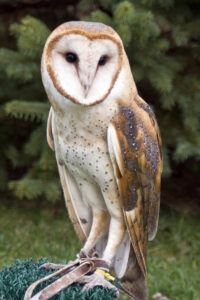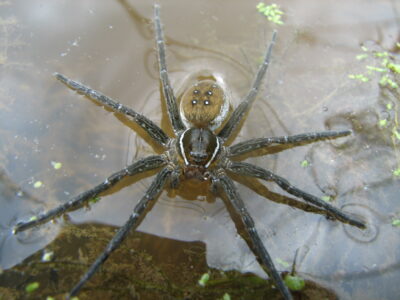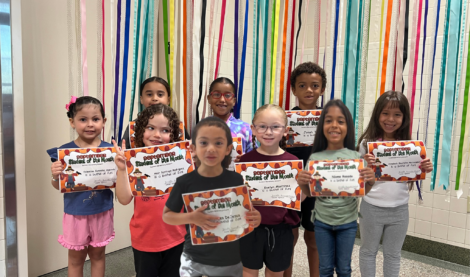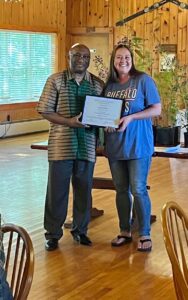The animals tied to Halloween
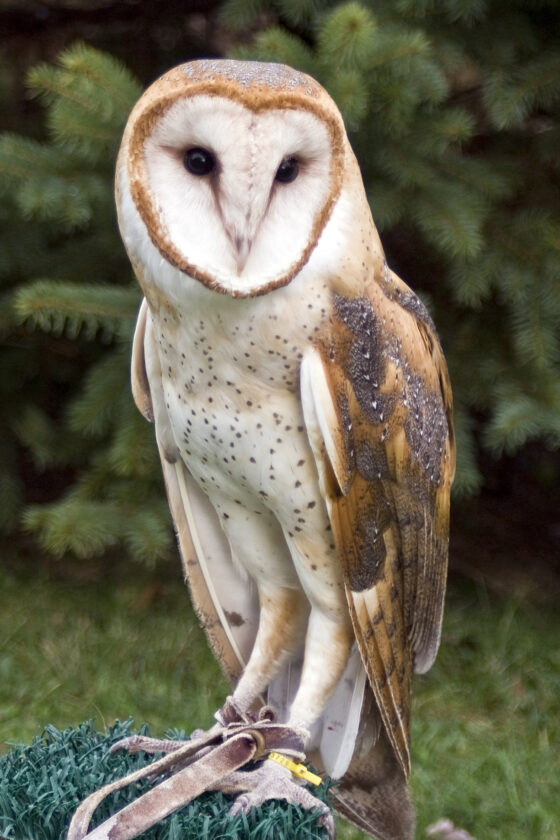
Barn Owl, origin of many ghost stories
- Barn Owl, origin of many ghost stories
- A fishing spider up close.
Many animals are associated with Halloween, especially the ones that people may fear or are deemed “creepy”. Several are particularly connected to Halloween imagery, including black cats, spiders, bats, snakes, crows, and owls. However, even the creepiest of crawlies still play an important role in the ecosystem.
Black cats are often depicted as signs of bad luck or as familiars of witches; however they are just one of many fur patterns that cats come in. Black cats can seamlessly hide in shadows with nothing but bright eyes to indicate their presence, giving them a mysterious air. Unlike the other Halloween animals, cats are domesticated companion animals and do best when inside with people.
Spiders are arachnids and feared by many. Though most are small and brown or black, they come in a wide variety of sizes and colors. Most spiders rarely bite unless surprised or provoked. They play an important role in the ecosystem and are experts at catching and eating insects like mosquitoes and flies. Because of their expertise, spiders are great friends to have when dealing with pest populations. Some species create and use webs. Orb weavers have the most well-known web design, creating beautiful spiral webs to catch their food, while cobweb spiders have webs that are an unorganized mess of strands, often found in dusty corners. There are even species that don’t wait for a meal to get caught in a web, instead choosing to hunt actively, like jumping spiders and wolf spiders. In addition to helping control pest populations, spiders are also a food source for larger animals, such as mud dauber wasps or insectivorous birds.
Filling the Halloween creepy crawly niche also include centipedes and millipedes, with their many segmented legs and long thin bodies. Insects are often dubbed creepy crawlies, and not without good reason. But for many animals in the ecosystem, insects are food they rely on to survive. It may be unpleasant to find one suddenly crawling on you, but watching them exist in nature can be mesmerizing, whether its watching ants create a trail or bees pollinating flowers. Insects are one of the most diverse groups of animals on the planet, with almost a million recorded species worldwide.
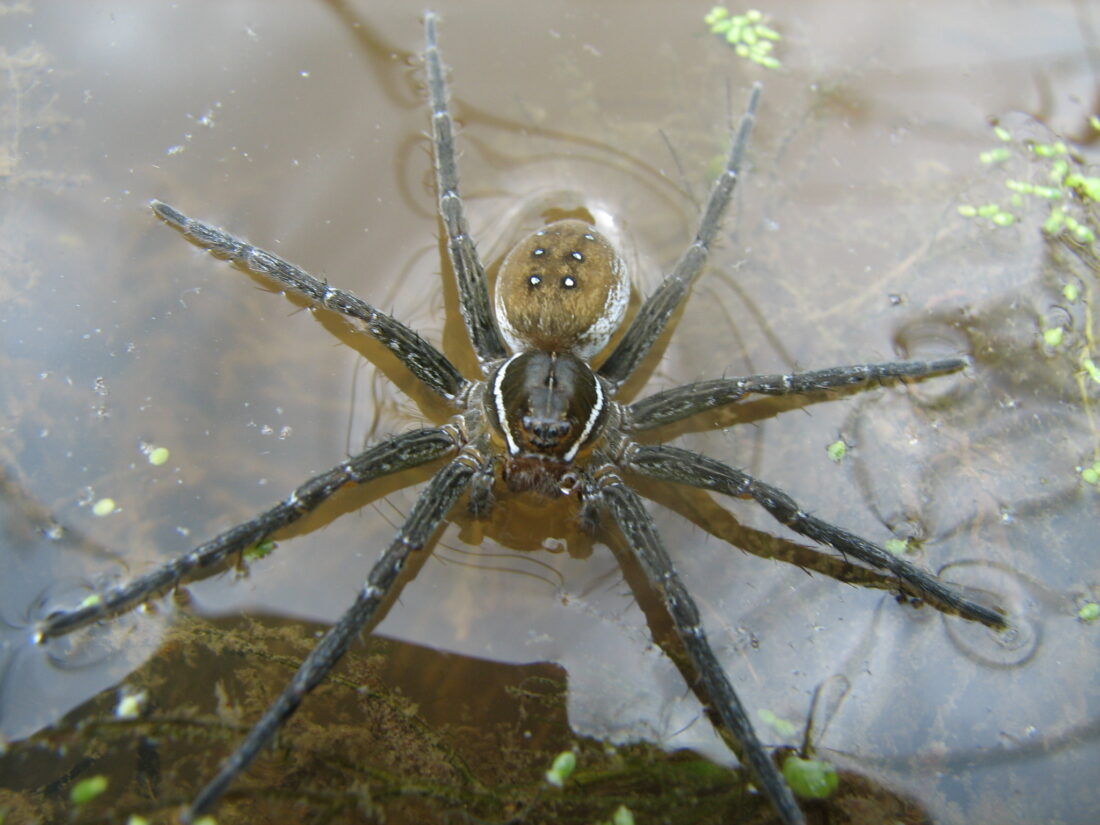
A fishing spider up close.
Although you might not want them in your living room, insects and arachnids are an important food source for rest of their ecosystem, including the next spooky animal on our list: bats.
Bats are the only mammals capable of powered flight. They have thin membranes between their arms and legs that they use as wings. Bats have an air of mystery about them because they are nocturnal; they are rarely seen during the day but at night you may spy their silhouette flying overhead. There are nine bat species that call NY state home, and they fall into one of two categories: cave-dwelling and tree-dwelling.
Although there are bat species in the world that primarily eat fruit, all of the native bat species here are insectivorous, or insect-eating. This means that if you see one flying at night, they are out hunting and eating bugs. With a mastery of nighttime hunting through the use of echolocation, they are able to. eat countless insects like mosquitoes, flies, and moths. They roost in groups during the day, and you can put up a bat box to attract them.
People often fear bats because they are a rabies vector species. They are one of several mammal species identified as a rabies vector, but because it is only spread through direct contact with an infected animal, unless you are regularly handling bats the risk of exposure for most people is very low. Bats play a crucial role in the ecosystem, helping to control flying insect populations while keeping night skies lively. Personally, I think bats are adorable, although I know many don’t share this opinion.
Snakes are another animal with an often-negative reputation. Unlike amphibians, snakes are not slimy. Instead their bodies are smooth, sleek, and scaly. Their eyes are covered in clear scales, so they are unable to blink. The most common snakes found in this area are the Common Garter Snake and Common Water Snake. Neither are venomous, and both prefer to slither away if confronted. Snakes are also good at controlling pest populations, especially of rodents like mice, catching then swallowing them whole.
Sometimes depicted as an ill omen with their iconic caw, crows are animals with an interesting reputation. Crows are very social animals and will often flock in family groups. Their caws and other calls are a form of communication, letting others in their flock know of things like danger or food. Incredibly intelligent, social, and caring, crows are awesome birds. They will even have funerals when a member of the flock dies, where they investigate potential dangers to avoid. When a crow funeral happens, it may seem ominous as many crows gather to observe the dead. During Halloween people like to lean into this fascinating but sometimes spooky side of things.
Owls are the nocturnal Halloween avian counterpart of the daytime crow. They have a strong association with magic, popularized by the Harry Potter series. Cryptic because of their nocturnal and elusive nature, owls are rare to see, though you may hear one calling at night. Barn Owls in particular have a strong connection to Halloween because of their call, an ear-piercing, blood-curdling shriek believed to have inspired many a ghost story. Like other raptors, owls are skilled at hunting for their food. Barn Owls are estimated to hunt and eat 1,000 small rodents in a single year, another great example of natural pest control and a necessary part of a balanced ecosystem.
This year I look forward to greeting trick-or-treaters and counting the number of animals I find on décor, but I also hope you can gain some appreciation for these often overlooked and under-loved species.
Audubon Community Nature Center builds and nurtures connections between people and nature. ACNC is located just east of Route 62 between Warren and Jamestown. The trails are open from dawn to dusk and birds of prey can be viewed anytime the trails are open. The Nature Center is open from 10 a.m. until 4:30 p.m. daily except Sunday when it opens at 1 p.m. More information can be found online at auduboncnc.org or by calling (716) 569-2345.

